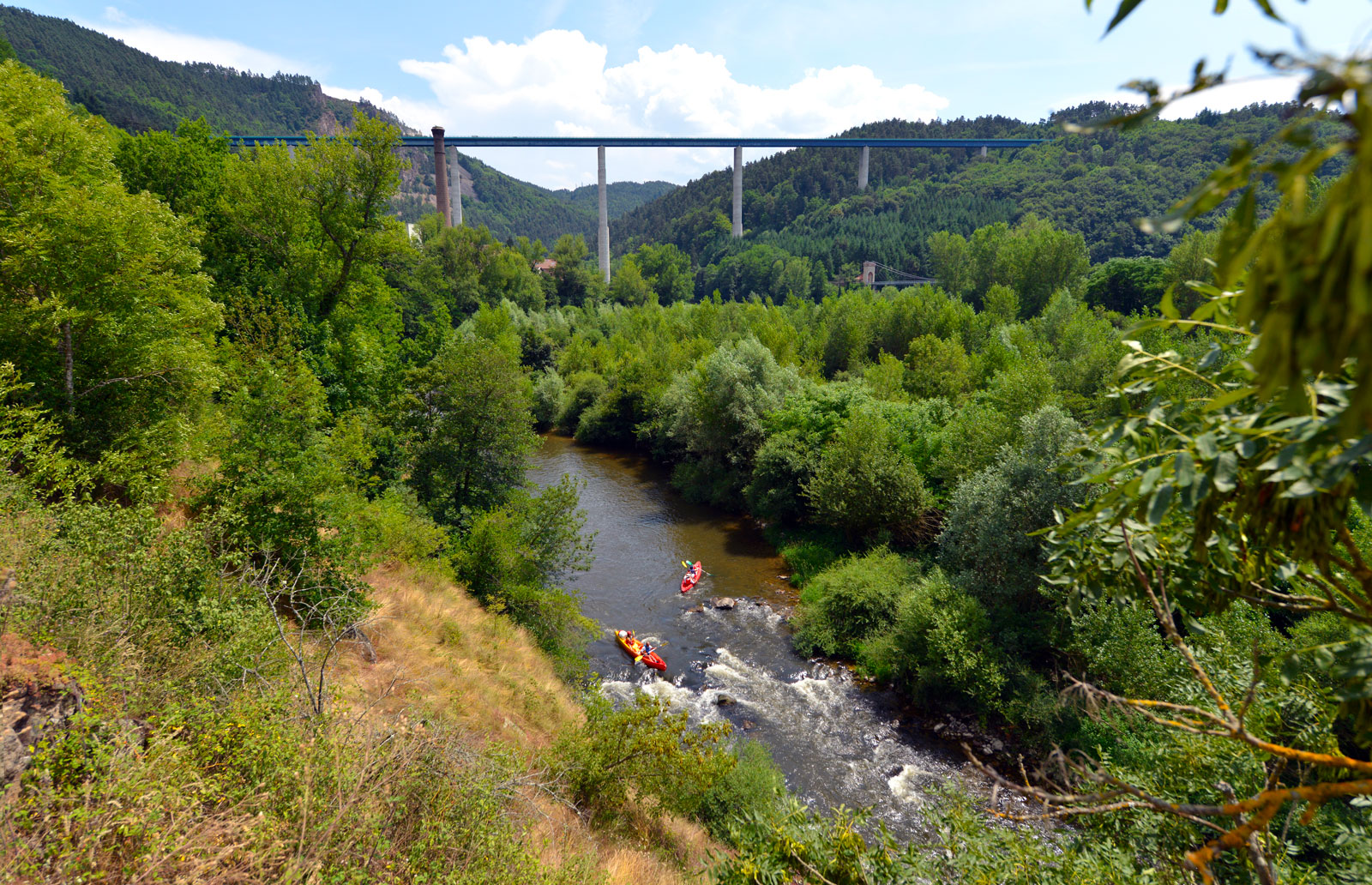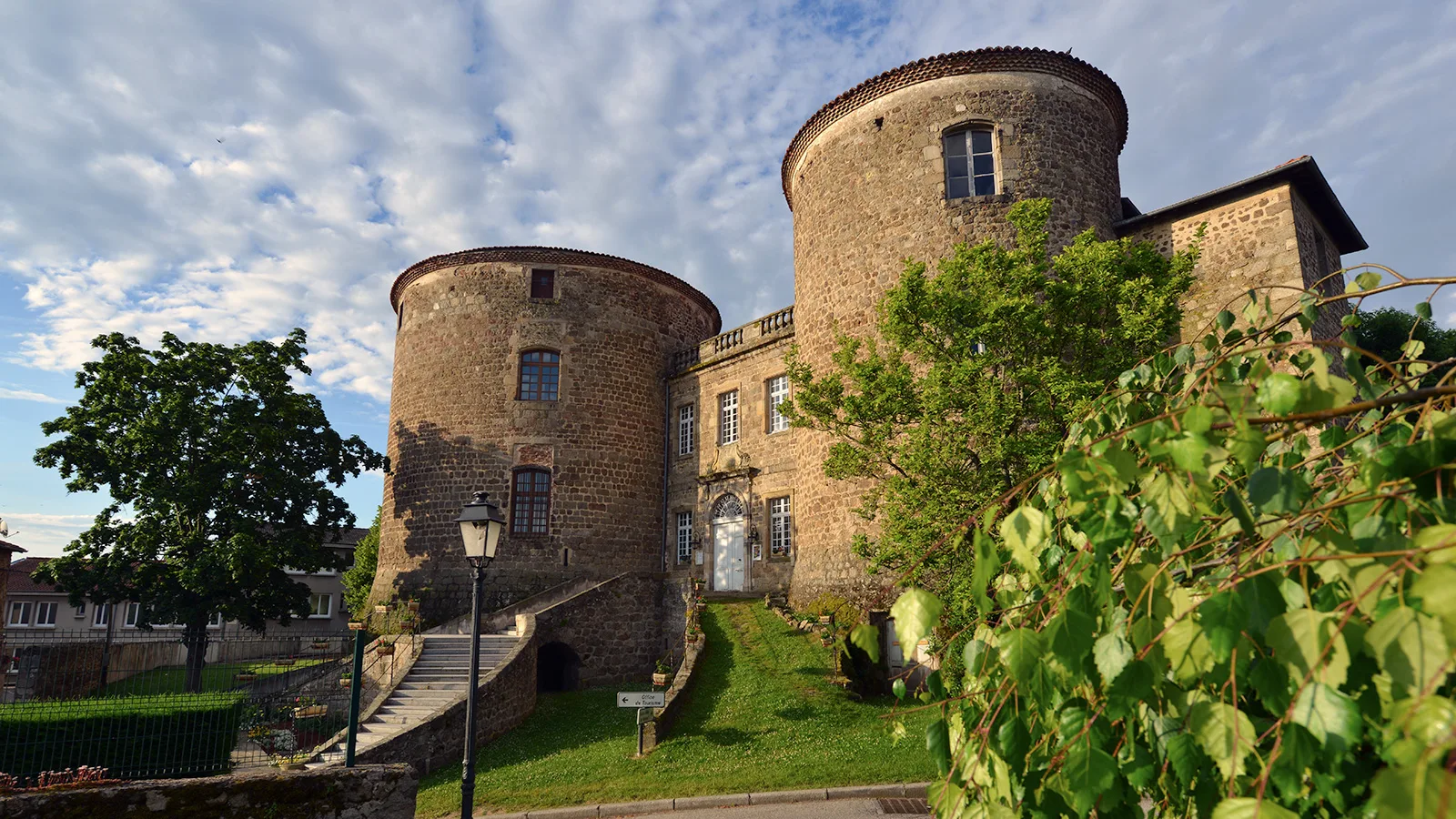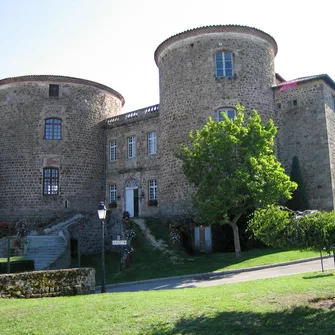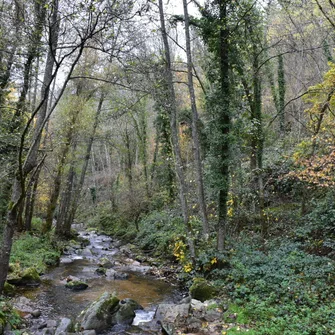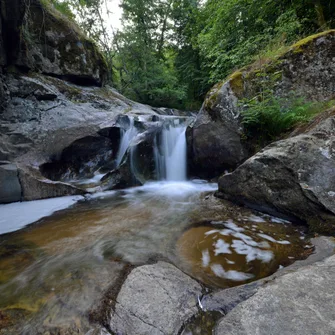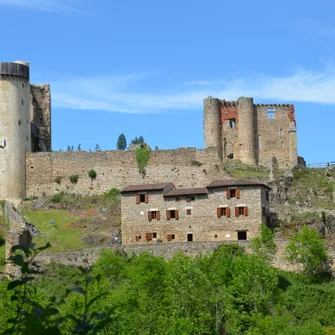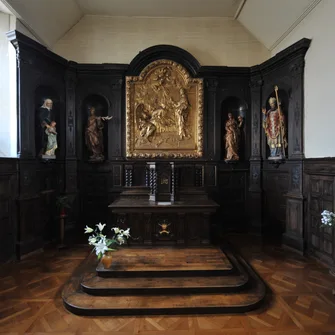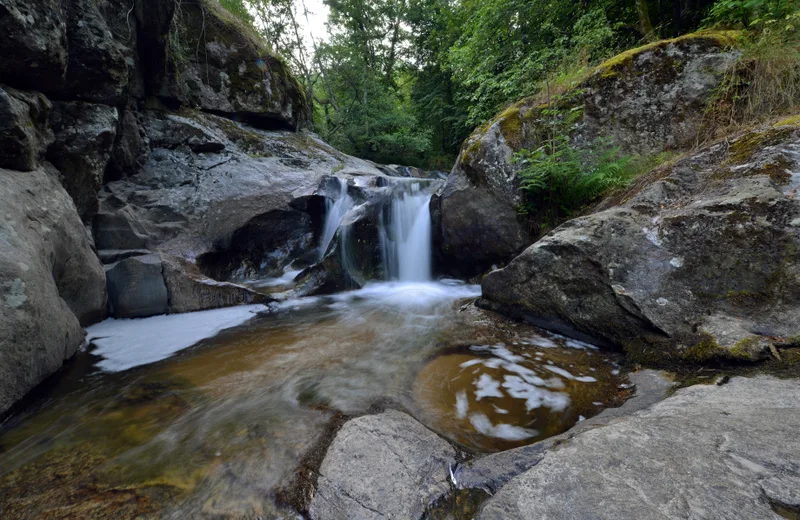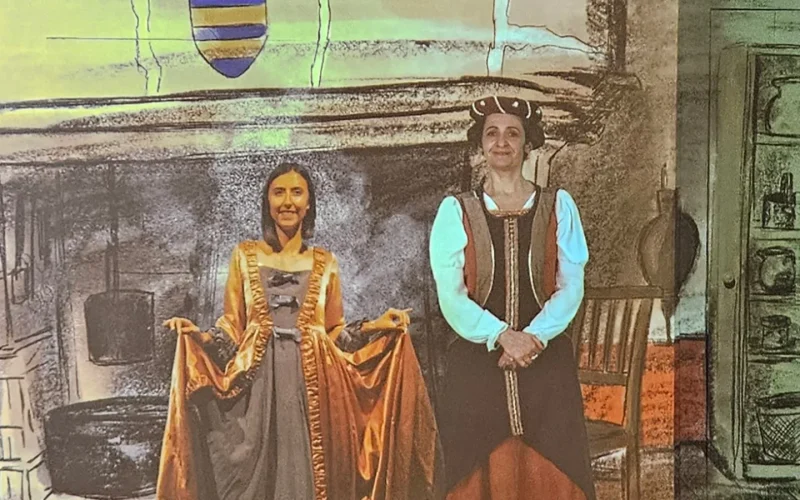Take a city tour on foot to discover the historic center of old Monistrol! 1 hour is enough for this walk punctuated with explanatory panels installed in the streets, these approximately follow the route of the old fortifications of the city of which some traces remain. Good discovery !
Starting point: castle of the bishops
The main dates of the castle of Monistrol-sur-Loire:
- 1270: the bishop of Puy buys the seigniory of Monistrol. Abandoning the “old castle” below, his successors will over time build the building on the top that we have before our eyes.
- 14th century: the south-west façade, with its ogival portcullis door and the Buisson tower.
- 15th century: Monseigneur de Bourbon had the lowered “big tower” built in the 17th century.
- 17th century: Monseigneur de Béthune gives the castle its classic look: monumental staircase, with two degrees and ramp; facade on the garden, framed by two pavilions; large volumes of the vestibule and the stairwell; enlargement of the park adorned with statues.
- 1783: Monseigneur de Galard, last lord of Monistrol, decorates the staircase with a wrought iron banister, the work of Miramand.
- 1791: Monseigneur de Galard leaves the castle for exile. The buildings and the park are sold in one lot.
- 1794: The park is dismembered and subdivided.
- 1838: The castle is divided in two. The eastern part becomes the school of the Brothers. Individuals follow one another in the other half, on the park side.
- 1909: The hospital acquires the western part of the castle and settles there.
- 1989: The hospital, now a retirement home, leaves the castle for new buildings in the garden. The municipality buys the vacated premises and undertakes their restoration.
Nearby points of interest
Below, a wild site, the granite chaos of Bilhard Gorge, has always been able to attract the religious spirit. Archaeological excavations in progress since 2017 on this site attest to an occupation of the space from the Middle Bronze Age (1650 - 1300 BC), then during the Iron Age (800 - 400 BC). Invested again in the Middle Ages, a castle was built around the XNUMXth century and definitively abandoned in the XNUMXth century.
View of the Loire Valley
In the distance, the Loire Valley. Between gorges upstream and downstream, it opens wide into the plain of Bas, the only crossing point of the river between Pont-de-Lignon and Aurec. this rich limagne has always been a zone of contacts and passages. It is also a border zone - between Forez and Velay - symbolized by the face to face of the two castles: that of Monistrol and that of Rochebaron, with impressive ruins.
The main street and the valley
The Portail Neuf defended the entrance to the old town from the side of the Puy road. The door was demolished in 1874, but the Black Madonna that adorned it found a niche in the Ursuline wall. From here, the “main street” and its shops led to the Collegiate.
To the east, the “city wall” enclosed houses and gardens. There are still some traces of it and you can see the thickness of it at the corner of the wall that borders the new car park (so called “parc des remparts”). A “vallat” (ditch) reinforced it. Soon filled, it served as an outer boulevard, to connect without entering the city, the three roads leading to Monistrol.
The Ursuline convent
The Ursulines, a congregation dedicated to the education of girls, founded many establishments at the beginning of the 17th century. They have been installed in Monistrol since 1634.
The staircase gives access to the chapel of the convent, where you can see one of the masterpieces of the sculptor Pierre Vaneau (1653 – 1694): an altarpiece whose dark woodwork highlights a large gilded bas-relief representing the death of Saint Joseph, and two large statues of Saint Ursula and Saint Madeleine.
General de Chabron
In this house lived and died General de Chabron (1806 – 1889), president of the general council, deputy, senator. Coming out of the ranks, officer in all the campaigns of the Second Empire (Algeria, Crimea, Italy), he earned his general's stars by winning by a daring maneuver, at the head of the 3rd Zouaves, the battle of Palestro (1859), the one of the three French victories which ensured the unity and independence of Italy.
He was elected in 1871 to represent Haute-Loire in the National Assembly. When the Republic was definitively created by the “Walloon amendment”, which passed to a single majority vote, this vote was that of General de Chabron. His newsletter Yes was the last to be thrown into the basket, the closing of the ballot having been suspended for him.
Around Prévescal
The “school group” opened its classes in 1921, bringing together the 3 public schools for boys, girls and kindergarten, which until then were dispersed and poorly established. The architecture abandons the rectangular granite frames; it affirms an ambition of modernity. On the same site stood before 1910 the hospital, built in 1707, whose chapel opened onto the meadow Vescal.
“Prévescal”, pra vescal, pré évescal: from time immemorial, it is the meadow of the bishop, who shared its use with the inhabitants. The wash house and what remains of the “weigher” testify to the urban life of yesteryear.
The street that borders it bears the name of Louis de Charbonnel, representative of the people, who fell in Paris during the riots of June 1848.
A monument recalls the memory of Senator Edouard Néron (1867 – 1945), mayor for 25 years.
Victory Square
Place de la Victoire owes its name to the “victory tree” which was solemnly planted on November 11, 1920. The sick sycamore was replaced in 2001 by an oak. This tree is also a symbol of the civic community. It stands on the site of the old “town house”, demolished in 1913, where the Saint Marcellin brotherhood, matrix of municipal power, then the two annual consuls of Monistrol, and since 1790 the town hall.
Nero Square
At the time of the lord bishops, the current place Néron was part of the episcopal park. A long avenue planted with trees descended from the castle to the gate of honor, which opened at the site of the fountain. Thus horse-drawn carriages could access the bishop's estate without entering the old town. But through the portal of “the street”, which came from the forecourt of the collegiate church, the inhabitants had their free entry into the vast park. They could admire statues and bowers there.
When, after the Revolution, the city extended towards the park, the lower half of the avenue became a large public square where fairs and markets could be held at ease.
Two monuments stand there: the “mission cross” (1823); the fountain, donated to the city by Adrien Néron (1886), in memory of whom the square took its name.
Saint-Marcellin Collegiate Church
Around 1150: construction of a new church, dedicated to Saint-Marcellin, whose relics it preserves. From this Romanesque building remain elements of the facade, the colonnade of the nave and the domed choir.
1309: the church is erected as a collegiate; the 13 canons of the chapter are appointed by the bishop.
1657: construction of a classic bell tower, surmounted by a dome (demolished in 1882, restored in 1984).
1794: the apse and the aisle chapels are destroyed; what remains of the church is transformed into a covered market.
1807: reconstruction of the exterior walls and an apse gave the church its current appearance.
To see: the tomb of Saint-Marcellin, the large Christ of the heart, the statue of the Virgin, the stained glass windows, masterpieces by Barrelon, the Christ, bas-relief by Dominique Kaeppelin.
Place de la Fontaine – and the Arbret district
The current fountain dates from 1834, but since the 16th century at least there was one here, at the apse of the church. It was for a long time the only public water point (but many houses have their wells).
Place de la Fontaine and the district of l'Arbret were separated for 6 centuries by the high building of the commandery of the Antonins whose facade was turned towards this small square.
L'Arbret has several remarkable houses: Renaissance house, house rebuilt in alignment in the 19th century, but using old elements: emblazoned lintel, mullions, stone dated 1684.
Themes


